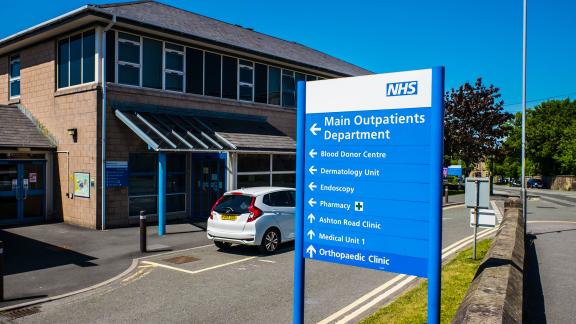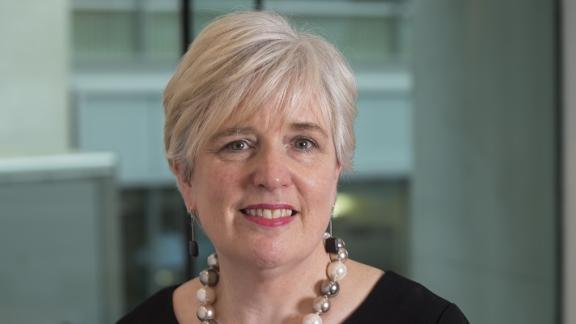Sustainability in the NHS – what’s the theory and what’s the practice?

Through the Greener NHS programme, the NHS has been set the challenge of becoming the world’s first net carbon zero health service. Legal experts from Hill Dickinson LLP look into the theory of what sustainability means for the NHS, and highlight examples of NHS organisations that are already tackling the climate element within the sustainability agenda.
The NHS sustainability agenda is much discussed, but without necessarily widespread clarity, understanding or consensus on what it means. That’s not surprising, given that the term ‘sustainability’ is applied in many different contexts. The United Nations 17 Sustainable Development Goals range from the elimination of poverty, to clean sanitation, gender equality, climate action, sustainable cities and communities, and good health and wellbeing. The concept of the three pillars of sustainability describes three areas of action – economic, social, and environmental – which overlap and interact to produce sustainability.
So, what does sustainability mean in the NHS context?
Defining sustainability in the NHS
The NHS Long Term Plan flagged elements of sustainability as ‘wider social goals’. The NHS triple aim requires regard to ‘efficiency and sustainability in relation to the use of resources by relevant bodies.’ Procurement guidance and regulations, many of which apply to NHS activities, increasingly require sustainability goals to be taken into account when decisions are made.
The concept of NHS organisations as anchor institutions was also discussed in the NHS Long Term Plan. NHS organisations have a significant stake in their local area and sizeable assets that can be used to support local community health and wellbeing, including tackling health inequalities. This concept is important as NHS organisations can use their status to influence both their own and others practices, including suppliers’, harnessing local community support to achieve sustainability aims.
And so, if this is the theory, what is happening in practice?
Becoming net carbon zero
There is a clear link between taking care of the environment and good health such that, put plainly, the climate emergency is a health emergency.
Many current activities are centred around climate action. There is a clear link between taking care of the environment and good health such that, put plainly, the climate emergency is a health emergency. It is therefore both morally and practically appropriate for the NHS to focus in this area.
Nationally, A Greener NHS is the NHS’s flagship programme aimed at tackling climate change and making the NHS the world’s first net carbon zero health service. As the biggest employer in the country responsible for 4 per cent of England’s total carbon emissions, there are many diverse opportunities to make inroads. The Greener NHS report, Delivering a Net Zero Health Service, collates examples of what can and should be done to achieve the aim, including:
- delivering care closer to home avoiding the carbon cost of travelling
- programmes to avoid less appropriate procedures and linked carbon emissions
- switching from disposable to reusable equipment
- using technologies to avoid plastics in medicine supply
- working with pharmaceutical companies to reduce emissions from high-carbon medicines such as inhalers and anaesthetic gases.
Many NHS organisations have already taken charge of their desire to tackle the climate element of the sustainability jigsaw. For example:
- The Newcastle upon Tyne Hospitals NHS Foundation Trust, and North Bristol NHS Trust jointly with University Bristol NHS Foundation Trust, declared climate emergencies in 2019. Newcastle was the first healthcare organisation in the world to do so and committed to being a net-zero organisation by 2040 partnering with Newcastle City Council and Newcastle University. The Bristol trusts committed to being carbon neutral by 2030.
- Great Ormond Street Hospital for Children NHS Foundation Trust became the first London hospital to declare a climate emergency. It highlighted the World Health Organisation’s estimate that over 80 per cent of illnesses, injuries and deaths due to climate change are in children, and the trust has created the Clean Air Hospital Framework, a world-first, practical guide to creating a healthier hospital environment.
- Guy’s and St Thomas’ NHS Foundation Trust has piloted a daily river boat delivery service to help improve local air quality and reduce its carbon footprint, in its efforts to achieve net zero by 2030.
- The Royal Wolverhampton NHS Trust has worked with the local council on a scheme which will see New Cross Hospital cabled directly to a new solar farm, making it the first English hospital to be fully powered by renewable energy.
- In Yorkshire, plans have been submitted for a new Airedale Hospital designed as Europe’s first carbon neutral hospital.
The concept of sustainability covers a massive area. What all the initiatives above have in common, is the way in which those organising and working within the NHS see themselves as key players in influencing not just the immediate task, but wider aims benefitting society as a whole. Given the scale of the challenges in front of us connected to sustainability goals, particularly climate change, this can only be a good thing.
This topic is the focus of a joint webinar with Hill Dickinson and the NHS Confederation on Wednesday 10 November, which will explore the context of sustainability policy and discuss practical steps currently being taken that might be expanded across the NHS.
Register your place for Theory and Practice: Making Sustainability a Reality in the NHS
Jamie Foster is a partner and Gemma Badger is a professional support lawyer at Hill Dickinson LLP. You can follow Hill Dickinson on Twitter @HillDickinson



